Warner & Swasey 20x Prism Terrestrial Telescope
| Vom Anfang des 20. Jahrhunderts stammt dieses schlanke 20x50 Porro-1 Prismenteleskop der US-Firma Warner & Swasey (Cleveland, Ohio). Das Aluminiumgehäuse ist aus einem Stück mit dem Objektivtubus angegossen. So gibt es nur einen oberen vierfach verschraubten Deckel, welcher schwarz lackiert ist und die Gravur "The Warner & Swasey Co, Cleveland Ohio Pat. March 18. 1902" trägt. Eine Seriennummer ist nicht vorhanden, jedoch haben weitere Exemplare die Nummer "253", "465", "484" und "485". Der lange schlanke Objektivtubus verbreitert sich etwas und hat eine Objektivfassung mit geringerm Durchmesser. Es ist mit dunkelbraunen Leder mit Naht ummantelt. Die Objektivlinse ist 50mm im Durchmesser. Das zweifach-diagonal geriffelte Fokussierungsteil hat eine Geradführung des Okularstücks. Dabei handelt es sich um eine Wechselokular - wie der Prospekt besagt, gab es mindestens 2 Okulare mit unterschiedlichen Vergrößerungen (25x und 50x), sowie ein Prismenteleskop mit 75mm (3 inch) Durchmesser (Bild 8; Ser.nr. 516). Das Prismenteleskop war mit einem azimutalen Stativ und Transportkiste erhältlich (s. Bild 7, vgl. u.). Die Montierung an dem Stativkopf war entweder mit zwei Schrauben (vgl. u.) oder wurde in einer Gabel festgeklemmt (s. Bild 6). Da die die Modelle mit 400er Seriennummern eine Gabelmontierung haben, wurde diese Montierung ggf. als spätere Variante eingeführt. |
This slender 20x50 prism telescopes dates from the beginning of the 20th century. It was made by the US maker "Warner & Swasey" (Cleveland, Ohio). The aluminium body and objective tube is a single cast piece. So there is only a top cover plate with four screws. It is painted black and marked "The Warner & Swasey Co, Cleveland Ohio Pat. March 18. 1902". This piece has no serial number, but other examples have got Nos. "253", "465", "485" and "486". The long slender objective tube widens only slightly and has a smaller objective frame diameter. The tube is covered with a seamed dark brown leather. The objective lens itself is 50mm in diameter (2 in.). The cross milled focusing piece has a linear movement of the ocular tube. It comes with an interchangeable ocular – as the catalogue states, there were at least two oculars of different power: 25x and 50x. Also a second prism telscope with 7.5cm (3 inch) diameter was available (pic. 8; sn. 516). The prism telescope came with a azimutal tripod and a carrying case (s. pic. 7, cf. below). The telescope was attached to the tripod head either with two screews or into a fork (see pic. 6). As the models with the 400s serial numbers all have a fork mount, it may well be that W&S introduced this for their later versions. |

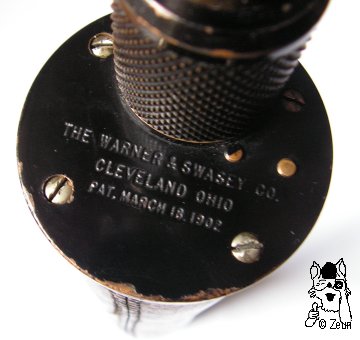
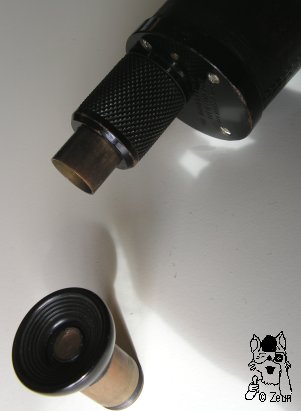
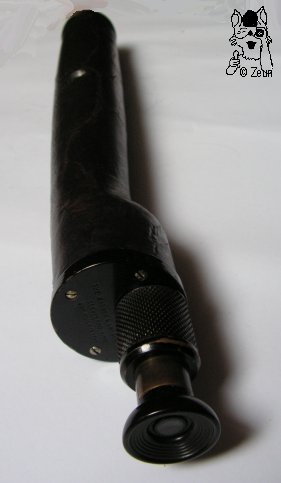
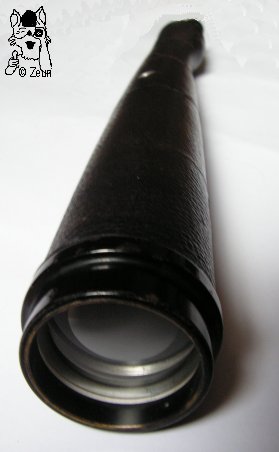
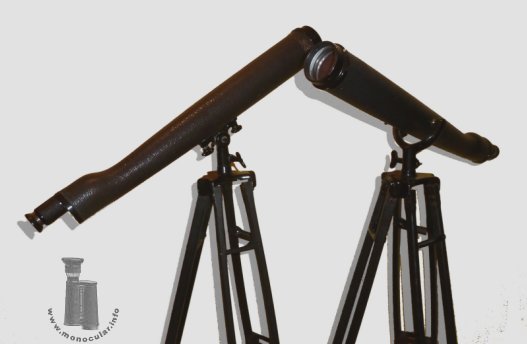
| Das Teleskop ist 55-57cm lang und fokussiert von ca. 20m bis unendlich. Die Objektivfassung ist 59mm im Durchmesser, der Objektivtubus verbreitert sich von 44mm auf 65mm. Das Prismgehäuse ist 54x52mm breit. Der Deckel ist 55mm im Durchmesser. Der Fokussierungsteil ist 29mm, die Okularhülse 19mm und die Bakelitaugenmuschel 31mm im Durchmesser. Das Spektiv wiegt 1207g. | The telescope is 55-57cm long and focuses from about c. 20m to infinity. The objective frame is 59mm in diameter, the objective tube increases from 44mm to 65mm in diameter. The prism housing is 54x52mm wide. The cover plate has a 55mm diameter. The focusing piece is 29mm, the eyepieced tube 19mm, and the Bakelite eyecup 31mm in diameter. The spotting scope weighs 1207g. |
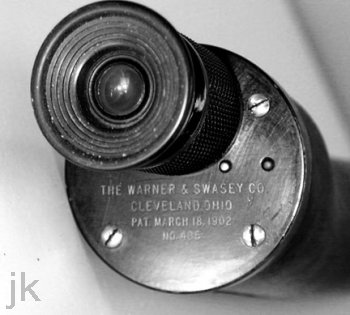
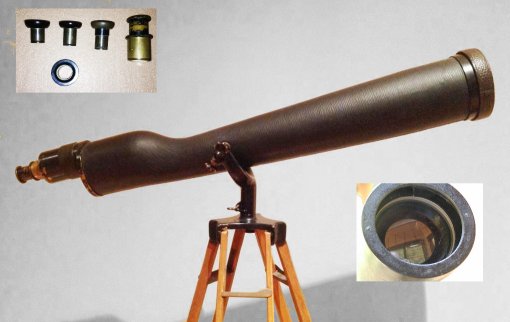
| Unten: Seiten aus einem frühen 1900er W&S Katalog. W&S gab auch extra ein Büchlein zur Nutzung des Teleskops für astronomische Beobachtungen heraus: "By Starlight and Moonlight"; für diesen Zweck waren die Okulare mit höheren Vergrößerung und die 75mm-Version sicherlich noch besser geeignet. | Below: pages from an early 1900s W&S catalogue. W&S also issued an booklet for the astronomical use of the prism telescope: "By Starlight and Moonlight"; the eyepieces with higher power as well as the 3 inch mdoel served this prupose even better. |


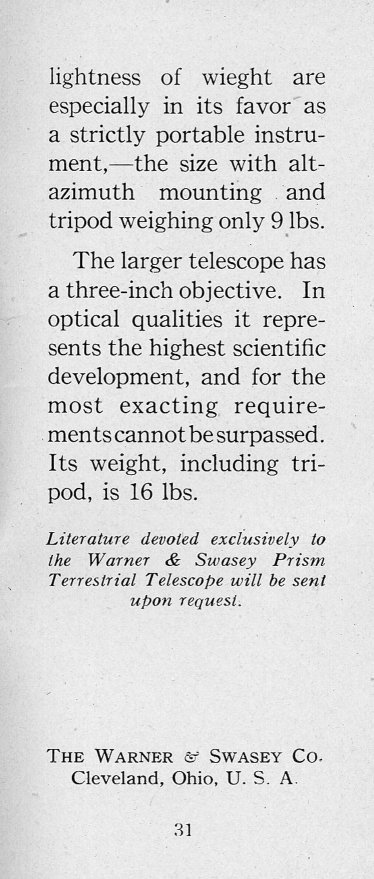
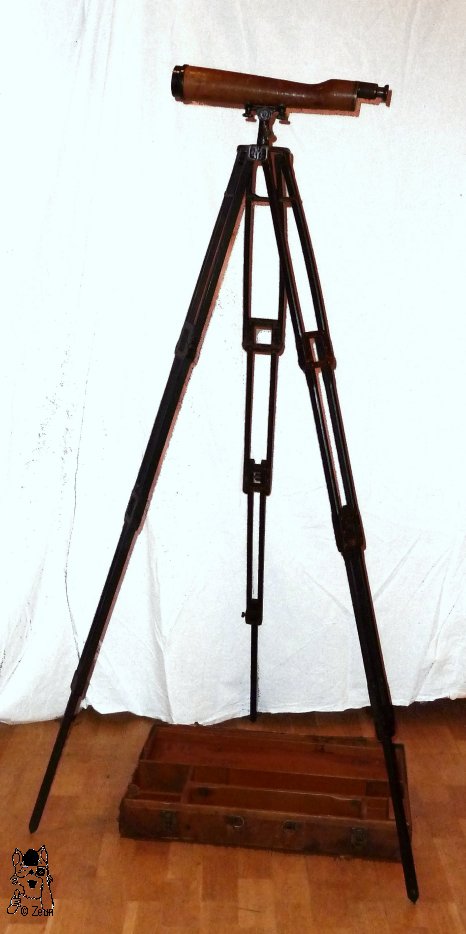
| Eine weitere 20x50 Variante ist nur 39cm lang, ist hellbraun beledert, hat kein Wechselokular – die vorhandene Leder bezogene Kiste hat jedoch ein Lochaussparung zum Verstauen eines Zweitokulars – ist aber ansonsten baugleich. Der Tubus hat zwei hintereinander liegende Gewindelöcher zur Anbringung der Stativmontage, so wie im Katalog abgebildet. Der Deckel ist zusätzlich mit "Signal Corps United States Army No 511" beschriftet. Ob dies eine Sonderanfertigung für das Signal Corps war oder eine zeitlich spätere Variante bleibt ungesichert. | Another 20x50 model is only 39cm in length. It has a light brown leather covering. The ocular can not be changed – the leather covered case that comes with the scope has a round recess to store a second ocular, though. All in all it is quite the same construction. The tube has two threaded tripod holes postiitoned one after the other. This matches the drawing in the catalogue. The top cover is additionally marked "Signal Corps United States Army No 511". Whether this version was especially made for the Signal Corps or was made at a different time period remains uncertain. |
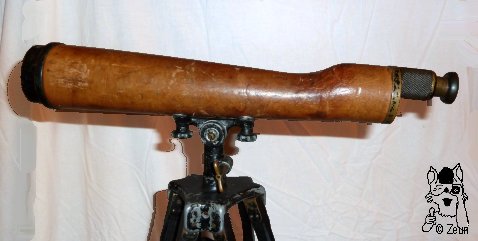
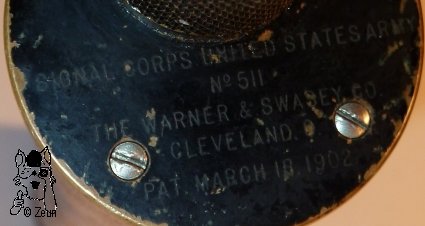
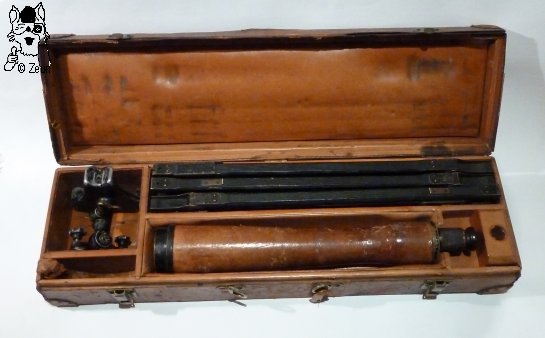
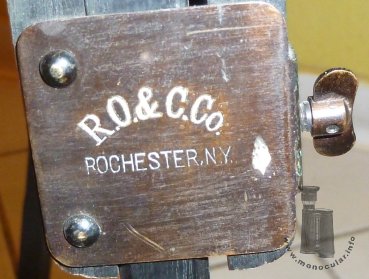
| Dieses Prismen-Teleskop wiegt 986g. Das Stativ besteht aus drei zusammenklappbaren Beinen (von R.O. & C. Co. Rochester; s. Foto) und einem Stativkopf mit zwei Befestigungschrauben. Die Stativbeine werden an dem Kopf eingeklemmt und durch Spannung gehalten. Alle Teile können in einem Lederkoffer verstaut werden. | This prism telescope weighs 986g. The tripod consists of three foldable legs (made by (R.O. & C. Co. Rochester; see photo) and a tripod head with two mounting screws. The tripod legs are clamped into the head, and are held by friction. All parts can be stored in the leather case. |
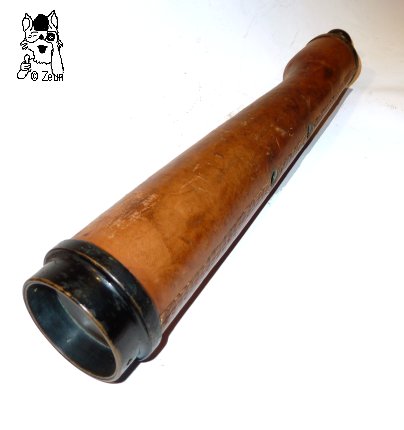
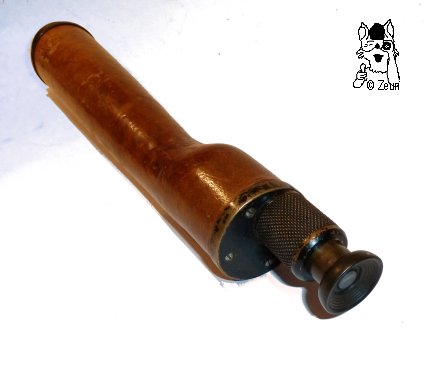
Fotos: Zeun, 7 J.Kelly, 8 R.Gilbert

